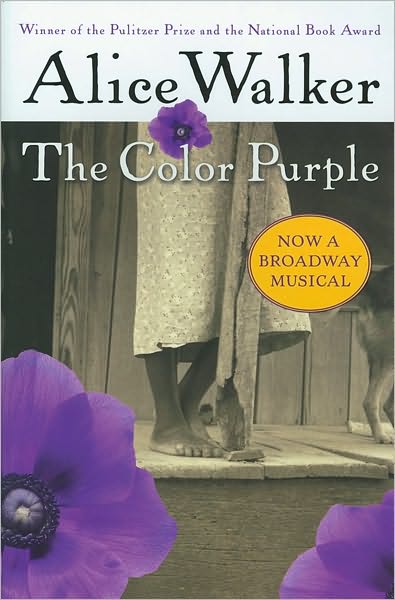
Wednesday, March 30, 2011
All Quiet on the Western Front by Erich Maria Remarque

The Art of Racing in the Rain by Garth Stein

The Book of Lost Things by John Connolly
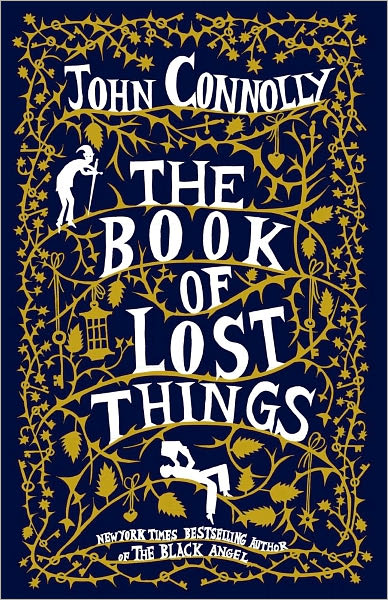 c2006 Fiction; Grades 9+; 339 p. 2007 Alex Award Winner Library Journal: After the death of his mother, 12-year-old David mourns her loss alone in his attic bedroom, with only his books to keep him company. As his anger at her death grows with each day, the books begin to speak to him, telling their wild tales of dragons, princes, and knights. Soon reality and fantasy collide, and David finds himself in a land unlike his own, a world where monsters, evil sorceresses, and half-human wolves dwell. With the help of friends he meets in this strange land, David goes on a search for the King, who is said to have The Book of Lost Things; this book will help David find his way home. Along the way, David encounters many challenges that transform the boy into a man. In an intriguing change of pace from his crime novels (Bad Men; Every Dead Thing), Connolly's book takes readers back into the imaginations they once held as children, reminding them of the time when they created fantasy worlds before adulthood changed them forever.
c2006 Fiction; Grades 9+; 339 p. 2007 Alex Award Winner Library Journal: After the death of his mother, 12-year-old David mourns her loss alone in his attic bedroom, with only his books to keep him company. As his anger at her death grows with each day, the books begin to speak to him, telling their wild tales of dragons, princes, and knights. Soon reality and fantasy collide, and David finds himself in a land unlike his own, a world where monsters, evil sorceresses, and half-human wolves dwell. With the help of friends he meets in this strange land, David goes on a search for the King, who is said to have The Book of Lost Things; this book will help David find his way home. Along the way, David encounters many challenges that transform the boy into a man. In an intriguing change of pace from his crime novels (Bad Men; Every Dead Thing), Connolly's book takes readers back into the imaginations they once held as children, reminding them of the time when they created fantasy worlds before adulthood changed them forever.
Born on a Blue Day: Inside the Extraordinary Mind of an Autistic Savant by Daniel Tammet

The Color Purple by Alice Walker
Defining Dulcie by Paul Acampora
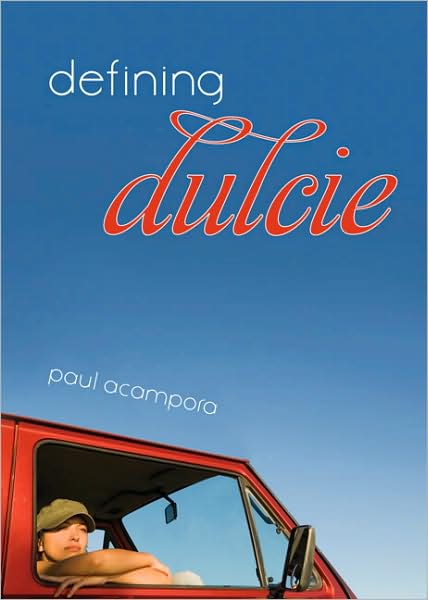 c2006 Fiction; Grades 7+; 168 p.
c2006 Fiction; Grades 7+; 168 p. Tuesday, March 29, 2011
Feed by M.T. Anderson
 c2002 Fiction; Grades 8+; 237 p. 2002 National Book Award for Young People's Literature Publisher’s Weekly: In this chilling novel, Anderson imagines a society dominated by the feed-a next-generation Internet/television hybrid that is directly hardwired into the brain. In a starred review, PW called this a "thought-provoking and scathing indictment of corporate-and media-dominated culture."
c2002 Fiction; Grades 8+; 237 p. 2002 National Book Award for Young People's Literature Publisher’s Weekly: In this chilling novel, Anderson imagines a society dominated by the feed-a next-generation Internet/television hybrid that is directly hardwired into the brain. In a starred review, PW called this a "thought-provoking and scathing indictment of corporate-and media-dominated culture."
Fever, 1793 by Laurie Halse Anderson
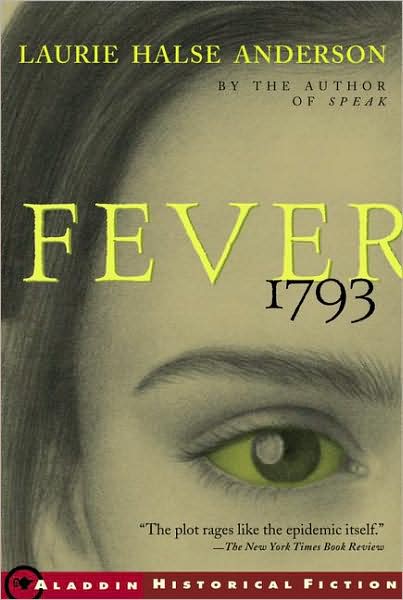 c2000 Fiction; Grades 6+; 251 p. 580L 2001 ALA Best Books for Young Adults School Library Journal: The sights, sounds, and smells of Philadelphia when it was still the nation's capital are vividly re-created in this well-told tale of a girl's coming-of-age, hastened by the outbreak of yellow fever. As this novel opens, Matilda Cook, 14, wakes up grudgingly to face another hot August day filled with the chores appropriate to the daughter of a coffeehouse owner. At its close, four months later, she is running the coffeehouse, poised to move forward with her dreams. Ambitious, resentful of the ordinary tedium of her life, and romantically imaginative, Matilda is a believable teenager, so immersed in her own problems that she can describe the freed and widowed slave who works for her family as the "luckiest" person she knows. Ironically, it is Mattie who is lucky in the loyalty of Eliza. The woman finds medical help when Mattie's mother falls ill, takes charge while the girl is sent away to the countryside, and works with the Free African Society. She takes Mattie in after her grandfather dies, and helps her reestablish the coffeehouse. Eliza's story is part of an important chapter in African-American history, but it is just one of many facets of this story of an epidemic. Mattie's friend Nathaniel, apprentice to the painter Master Peale, emerges as a clear partner in her future. There are numerous eyewitness accounts of the devastation by Dr. Benjamin Rush and other prominent Philadelphians of the day. Readers will be drawn in by the characters and will emerge with a sharp and graphic picture of another world.
c2000 Fiction; Grades 6+; 251 p. 580L 2001 ALA Best Books for Young Adults School Library Journal: The sights, sounds, and smells of Philadelphia when it was still the nation's capital are vividly re-created in this well-told tale of a girl's coming-of-age, hastened by the outbreak of yellow fever. As this novel opens, Matilda Cook, 14, wakes up grudgingly to face another hot August day filled with the chores appropriate to the daughter of a coffeehouse owner. At its close, four months later, she is running the coffeehouse, poised to move forward with her dreams. Ambitious, resentful of the ordinary tedium of her life, and romantically imaginative, Matilda is a believable teenager, so immersed in her own problems that she can describe the freed and widowed slave who works for her family as the "luckiest" person she knows. Ironically, it is Mattie who is lucky in the loyalty of Eliza. The woman finds medical help when Mattie's mother falls ill, takes charge while the girl is sent away to the countryside, and works with the Free African Society. She takes Mattie in after her grandfather dies, and helps her reestablish the coffeehouse. Eliza's story is part of an important chapter in African-American history, but it is just one of many facets of this story of an epidemic. Mattie's friend Nathaniel, apprentice to the painter Master Peale, emerges as a clear partner in her future. There are numerous eyewitness accounts of the devastation by Dr. Benjamin Rush and other prominent Philadelphians of the day. Readers will be drawn in by the characters and will emerge with a sharp and graphic picture of another world.
The Glass Castle by Jeanette Walls
 c2005 Non-fiction; Grades 9+; 288 p. 2006 ALA Alex Award Publisher’s Weekly: Freelance writer Walls doesn't pull her punches. She opens her memoir by describing looking out the window of her taxi, wondering if she's "overdressed for the evening" and spotting her mother on the sidewalk, "rooting through a Dumpster." Walls's parents-just two of the unforgettable characters in this excellent, unusual book-were a matched pair of eccentrics, and raising four children didn't conventionalize either of them. Her father was a self-taught man, a would-be inventor who could stay longer at a poker table than at most jobs and had "a little bit of a drinking situation," as her mother put it. With a fantastic storytelling knack, Walls describes her artist mom's great gift for rationalizing. Apartment walls so thin they heard all their neighbors? What a bonus-they'd "pick up a little Spanish without even studying." Why feed their pets? They'd be helping them "by not allowing them to become dependent." While Walls's father's version of Christmas presents-walking each child into the Arizona desert at night and letting each one claim a star-was delightful, he wasn't so dear when he stole the kids' hard-earned savings to go on a bender. The Walls children learned to support themselves, eating out of trashcans at school or painting their skin so the holes in their pants didn't show. Buck-toothed Jeannette even tried making her own braces when she heard what orthodontia cost. One by one, each child escaped to New York City. Still, it wasn't long before their parents appeared on their doorsteps. "Why not?" Mom said. "Being homeless is an adventure."
c2005 Non-fiction; Grades 9+; 288 p. 2006 ALA Alex Award Publisher’s Weekly: Freelance writer Walls doesn't pull her punches. She opens her memoir by describing looking out the window of her taxi, wondering if she's "overdressed for the evening" and spotting her mother on the sidewalk, "rooting through a Dumpster." Walls's parents-just two of the unforgettable characters in this excellent, unusual book-were a matched pair of eccentrics, and raising four children didn't conventionalize either of them. Her father was a self-taught man, a would-be inventor who could stay longer at a poker table than at most jobs and had "a little bit of a drinking situation," as her mother put it. With a fantastic storytelling knack, Walls describes her artist mom's great gift for rationalizing. Apartment walls so thin they heard all their neighbors? What a bonus-they'd "pick up a little Spanish without even studying." Why feed their pets? They'd be helping them "by not allowing them to become dependent." While Walls's father's version of Christmas presents-walking each child into the Arizona desert at night and letting each one claim a star-was delightful, he wasn't so dear when he stole the kids' hard-earned savings to go on a bender. The Walls children learned to support themselves, eating out of trashcans at school or painting their skin so the holes in their pants didn't show. Buck-toothed Jeannette even tried making her own braces when she heard what orthodontia cost. One by one, each child escaped to New York City. Still, it wasn't long before their parents appeared on their doorsteps. "Why not?" Mom said. "Being homeless is an adventure."
The Good Thief by Hannah Tinti
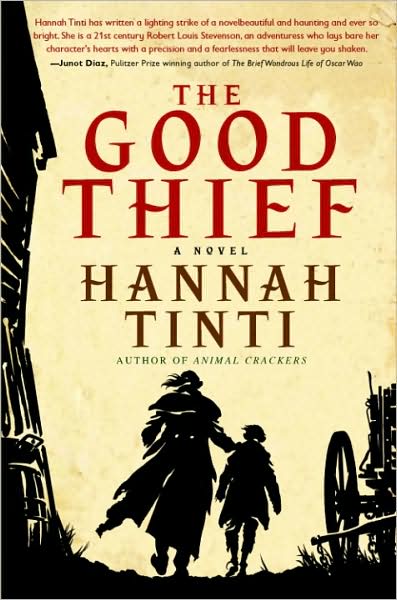 c2008 Fiction; Grades 9+; 327 p.
c2008 Fiction; Grades 9+; 327 p. Graceling by Kristin Cashore
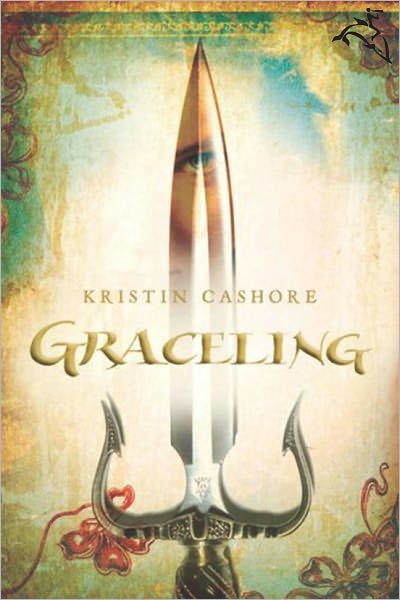 c2008 Fiction; Grades 8+; 471 p. 730L Publisher’s Weekly and School Library Journal 2008 Best Books of the Year Booklist Starred Review: Feared as a killer since her childhood, Lady Katsa uses her unusual Grace (superhuman gift) in the service of her uncle, King Randa. She is beginning to rebel against his orders to kill or maim his more disloyal subjects when her path crosses that of Po. A young foreign prince with a mysterious Grace as well as wisdom beyond his years, Po convinces Katsa that she can stand up to the brutal king and put her gift to better uses. When Katsa joins Po on a quest, she throws herself headlong into a rescue mission and finds romance, self-knowledge, and justice along the way. Although many fantasy writers create intriguing alternate worlds and worthy adventures, as Cashore does in this well-imagined novel, she also offers believable characters with enough depth, subtlety, and experience to satisfy older readers. Katsa is a heroine who can physically overpower most men she meets, yet her strength is not achieved by becoming manlike. She may care little for fine clothes, but from her first kill to her first experience of lovemaking, Katsa’s womanhood is integral to her character. An impressive first novel, this well-crafted and rewarding fantasy will leave readers hoping for more.
c2008 Fiction; Grades 8+; 471 p. 730L Publisher’s Weekly and School Library Journal 2008 Best Books of the Year Booklist Starred Review: Feared as a killer since her childhood, Lady Katsa uses her unusual Grace (superhuman gift) in the service of her uncle, King Randa. She is beginning to rebel against his orders to kill or maim his more disloyal subjects when her path crosses that of Po. A young foreign prince with a mysterious Grace as well as wisdom beyond his years, Po convinces Katsa that she can stand up to the brutal king and put her gift to better uses. When Katsa joins Po on a quest, she throws herself headlong into a rescue mission and finds romance, self-knowledge, and justice along the way. Although many fantasy writers create intriguing alternate worlds and worthy adventures, as Cashore does in this well-imagined novel, she also offers believable characters with enough depth, subtlety, and experience to satisfy older readers. Katsa is a heroine who can physically overpower most men she meets, yet her strength is not achieved by becoming manlike. She may care little for fine clothes, but from her first kill to her first experience of lovemaking, Katsa’s womanhood is integral to her character. An impressive first novel, this well-crafted and rewarding fantasy will leave readers hoping for more.
The Graveyard Book by Neil Gaiman
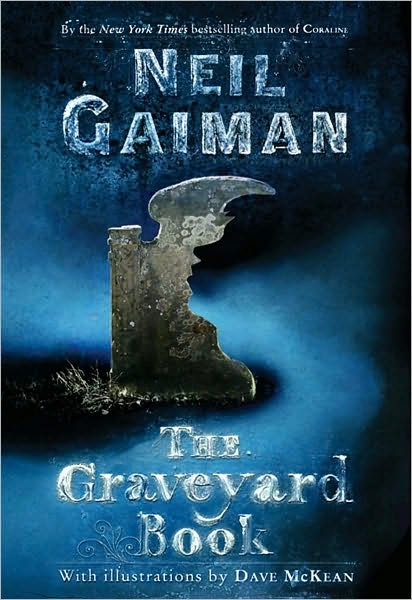 c2008 Fiction; Grades 7+; 312 p. 820L 2009 ALA Newberry Award Booklist Starred Review: While a highly motivated killer murders his family, a baby, ignorant of the horrific goings-on but bent on independence, pulls himself out of his crib and toddles out of the house and into the night. This is most unfortunate for the killer, since the baby was his prime target. Finding his way through the barred fence of an ancient graveyard, the baby is discovered by Mr. and Mrs. Owens, a stable and caring couple with no children of their own and who just happen to be dead. After much debate with the graveyard's rather opinionated denizens, it is decided that the Owenses will take in the child. Under their care and the sponsorship of the mysterious Silas, the baby is named Nobody and raised among the dead to protect him from the killer, who relentlessly pursues him. This is an utterly captivating tale that is cleverly told through an entertaining cast of ghostly characters. There is plenty of darkness, but the novel's ultimate message is strong and life affirming. Although marketed to the younger YA set, this is a rich story with broad appeal and is highly recommended for teens of all ages.
c2008 Fiction; Grades 7+; 312 p. 820L 2009 ALA Newberry Award Booklist Starred Review: While a highly motivated killer murders his family, a baby, ignorant of the horrific goings-on but bent on independence, pulls himself out of his crib and toddles out of the house and into the night. This is most unfortunate for the killer, since the baby was his prime target. Finding his way through the barred fence of an ancient graveyard, the baby is discovered by Mr. and Mrs. Owens, a stable and caring couple with no children of their own and who just happen to be dead. After much debate with the graveyard's rather opinionated denizens, it is decided that the Owenses will take in the child. Under their care and the sponsorship of the mysterious Silas, the baby is named Nobody and raised among the dead to protect him from the killer, who relentlessly pursues him. This is an utterly captivating tale that is cleverly told through an entertaining cast of ghostly characters. There is plenty of darkness, but the novel's ultimate message is strong and life affirming. Although marketed to the younger YA set, this is a rich story with broad appeal and is highly recommended for teens of all ages.
The Guernsey Literary and Potato Peel Society by Mary Ann Shaffer & Annie Barrows
 c2008 Fiction; Grades 9+; 277 p. 930L 2008 -The Washington Post "Best Books” Booklist: Winding up her book tour promoting her collection of lighthearted wartime newspaper columns, Juliet Ashton casts about for a more serious project. Opportunity comes in the form of a letter she receives from Mr. Dawsey Adams, who happens to possess a book that Julia once owned. Adams is a member of the Guernsey Literary and Potato Peel Pie Society—no ordinary book club. Rather, it was formed as a ruse and became a way for people to get together without raising the suspicions of Guernsey’s Nazi occupiers. Written in the form of letters (a lost art), this novel by an aunt-and-niece team has loads of charm, especially as long as Juliet is still in London corresponding with the society members. Some of the air goes out of the book when she gets to Guernsey; the humorous tone doesn’t quite mesh with what the islanders suffered. But readers should enjoy this literary soufflé for the most part, and curiosity about the German occupation of the British Channel Islands will be piqued.
c2008 Fiction; Grades 9+; 277 p. 930L 2008 -The Washington Post "Best Books” Booklist: Winding up her book tour promoting her collection of lighthearted wartime newspaper columns, Juliet Ashton casts about for a more serious project. Opportunity comes in the form of a letter she receives from Mr. Dawsey Adams, who happens to possess a book that Julia once owned. Adams is a member of the Guernsey Literary and Potato Peel Pie Society—no ordinary book club. Rather, it was formed as a ruse and became a way for people to get together without raising the suspicions of Guernsey’s Nazi occupiers. Written in the form of letters (a lost art), this novel by an aunt-and-niece team has loads of charm, especially as long as Juliet is still in London corresponding with the society members. Some of the air goes out of the book when she gets to Guernsey; the humorous tone doesn’t quite mesh with what the islanders suffered. But readers should enjoy this literary soufflé for the most part, and curiosity about the German occupation of the British Channel Islands will be piqued.
Have a Little Faith by Mitch Albom
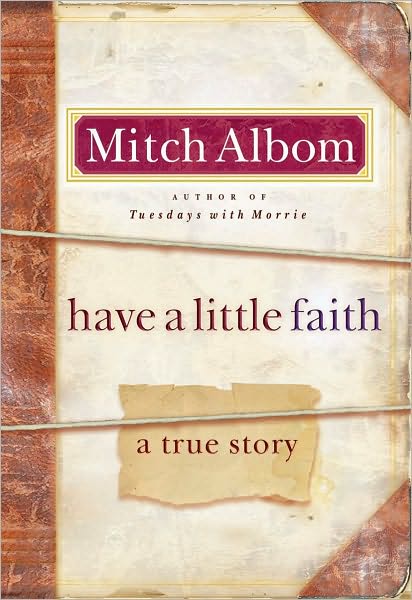 c2009 Non-Fiction; Grades 8+; 254 p. Publisher’s Weekly Best Books of the Year 2009 Booklist: In his thirties, Albom’s rabbi, after hearing him deliver a speech, asked Albom to deliver the eulogy at his funeral. Not big on faith and married to a Christian woman of Lebanese background, Albom was taken aback. He’d known Rabbi Albert Lewis since he was a child, seeing him as the tall and distant figure somewhere between God and the congregants of the synagogue in a New Jersey suburb. He consented and asked to spend time with Reb to get to know him as a man. In eight years, what began as a reluctant assignment grew into a treasured friendship with a man of unbounded joy, singing everything from show tunes to greetings to his visitors. In his new hometown of Detroit, where he developed a charitable foundation, Albom met Henry Covington, pastor of a dilapidated inner-city church and a humbled former drug dealer and ex-con. Covington’s church, with a huge hole in the roof and very few and very poor congregants, obviously needed help. But Albom wasn’t sure how much to invest until he began to witness the faith of Covington and his congregation, struggling to overcome poverty, addictions, and hopelessness. Albom parallels time spent with Rabbi Lewis, Pastor Covington, and his own personal spiritual journey as he learned the incredible complexities of faith, finding it, holding on to it, and seeing and appreciating it at work in others. Albom, author of the acclaimed Tuesdays with Morrie (1997), offers another inspirational and heartwarming story about the strength of friendship and power of faith.
c2009 Non-Fiction; Grades 8+; 254 p. Publisher’s Weekly Best Books of the Year 2009 Booklist: In his thirties, Albom’s rabbi, after hearing him deliver a speech, asked Albom to deliver the eulogy at his funeral. Not big on faith and married to a Christian woman of Lebanese background, Albom was taken aback. He’d known Rabbi Albert Lewis since he was a child, seeing him as the tall and distant figure somewhere between God and the congregants of the synagogue in a New Jersey suburb. He consented and asked to spend time with Reb to get to know him as a man. In eight years, what began as a reluctant assignment grew into a treasured friendship with a man of unbounded joy, singing everything from show tunes to greetings to his visitors. In his new hometown of Detroit, where he developed a charitable foundation, Albom met Henry Covington, pastor of a dilapidated inner-city church and a humbled former drug dealer and ex-con. Covington’s church, with a huge hole in the roof and very few and very poor congregants, obviously needed help. But Albom wasn’t sure how much to invest until he began to witness the faith of Covington and his congregation, struggling to overcome poverty, addictions, and hopelessness. Albom parallels time spent with Rabbi Lewis, Pastor Covington, and his own personal spiritual journey as he learned the incredible complexities of faith, finding it, holding on to it, and seeing and appreciating it at work in others. Albom, author of the acclaimed Tuesdays with Morrie (1997), offers another inspirational and heartwarming story about the strength of friendship and power of faith. The Help by Kathryn Stockett
 c2009 Fiction; Grades 9+; 451 p. 2010 Indies Choice Book of the YearBooklist: Jackson, Mississippi, in the early 1960s is a city of tradition. Silver is used at bridge-club luncheons, pieces polished to perfection by black maids who yes, ma'am, and no, ma'am, to the young white ladies who order the days. This is the world Eugenia Skeeter Phelan enters when she graduates from Ole Miss and returns to the family plantation, but it is a world that, to her, seems ripe for change. As she observes her friend Elizabeth rudely interact with Aibileen, the gentle black woman who is practically raising Elizabeth's two-year-old daughter, Mae Mobley, Skeeter latches ontothe idea of writing the story of such fraught domestic relations from the help's point of view. With the reluctant assistance of Aibileen's feisty friend, Minny, Skeeter manages to interview a dozen of the city's maids, and the book, when it is finally published, rocks Jackson's world in unimaginable ways. With pitch-perfect tone and an unerring facility for character and setting, Stockett's richly accomplished debut novel inventively explores the unspoken ways in which the nascent civil rights and feminist movements threatened the southern status quo. Look for the forthcoming movie to generate keen interest in Stockett's luminous portrait of friendship, loyalty, courage, and redemption.
c2009 Fiction; Grades 9+; 451 p. 2010 Indies Choice Book of the YearBooklist: Jackson, Mississippi, in the early 1960s is a city of tradition. Silver is used at bridge-club luncheons, pieces polished to perfection by black maids who yes, ma'am, and no, ma'am, to the young white ladies who order the days. This is the world Eugenia Skeeter Phelan enters when she graduates from Ole Miss and returns to the family plantation, but it is a world that, to her, seems ripe for change. As she observes her friend Elizabeth rudely interact with Aibileen, the gentle black woman who is practically raising Elizabeth's two-year-old daughter, Mae Mobley, Skeeter latches ontothe idea of writing the story of such fraught domestic relations from the help's point of view. With the reluctant assistance of Aibileen's feisty friend, Minny, Skeeter manages to interview a dozen of the city's maids, and the book, when it is finally published, rocks Jackson's world in unimaginable ways. With pitch-perfect tone and an unerring facility for character and setting, Stockett's richly accomplished debut novel inventively explores the unspoken ways in which the nascent civil rights and feminist movements threatened the southern status quo. Look for the forthcoming movie to generate keen interest in Stockett's luminous portrait of friendship, loyalty, courage, and redemption.
The House of the Scorpion by Nancy Farmer
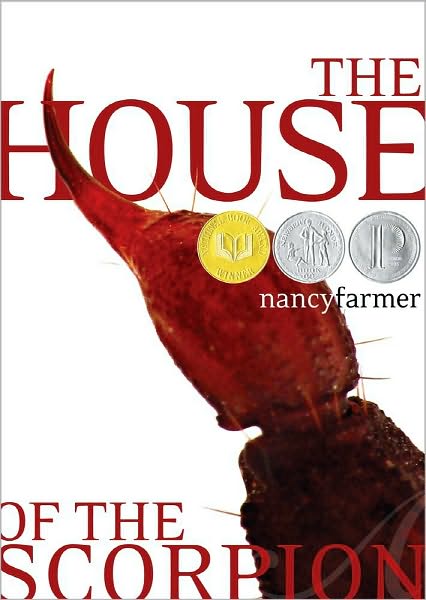 c2002 Fiction; Grades 7+; 380 p. 660L 2003 ALA Newberry Honor Book Booklist Starred: Alacran is a clone of the original Matteo Alacran, known as El Patron, the 142-year-old absolute ruler of Opium, a country separating the U.S and Aztlan, once known as Mexico. In Opium, mind-controlled slaves care for fields of poppies, and clones are universally despised. Matt, on El Patron's orders, is the only clone whose intelligence has not been blunted. While still quite young, Matt is taken from the loving care of El Patron's cook and placed into the abusive hands of a maid, who treats him like an animal. At 7, brought to El Patron's attention, he begins an indulged life, getting an education and musical training, though he is never allowed to forget that he is not considered human. Matt doesn't learn until he is 14 that El Patron has had other clones, who have provided hearts and other organs so El Patron can go on living. This is a powerful, ultimately hopeful, story that builds on today's sociopolitical, ethical, and scientific issues and prognosticates a compelling picture of what the future could bring. All of these serious issues are held together by a remarkable coming-of-age story, in which a boy's self-image and right to life are at stake.
c2002 Fiction; Grades 7+; 380 p. 660L 2003 ALA Newberry Honor Book Booklist Starred: Alacran is a clone of the original Matteo Alacran, known as El Patron, the 142-year-old absolute ruler of Opium, a country separating the U.S and Aztlan, once known as Mexico. In Opium, mind-controlled slaves care for fields of poppies, and clones are universally despised. Matt, on El Patron's orders, is the only clone whose intelligence has not been blunted. While still quite young, Matt is taken from the loving care of El Patron's cook and placed into the abusive hands of a maid, who treats him like an animal. At 7, brought to El Patron's attention, he begins an indulged life, getting an education and musical training, though he is never allowed to forget that he is not considered human. Matt doesn't learn until he is 14 that El Patron has had other clones, who have provided hearts and other organs so El Patron can go on living. This is a powerful, ultimately hopeful, story that builds on today's sociopolitical, ethical, and scientific issues and prognosticates a compelling picture of what the future could bring. All of these serious issues are held together by a remarkable coming-of-age story, in which a boy's self-image and right to life are at stake.
Wednesday, March 23, 2011
The Immortal Life of Henrietta Lacks by Rebecca Skloot
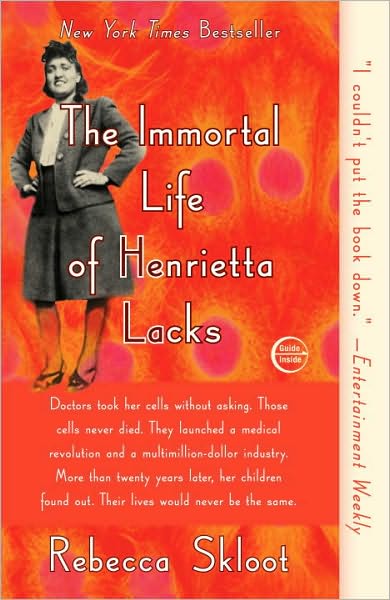 c2010 Non-Fiction; Grades 9+; 369 p.
c2010 Non-Fiction; Grades 9+; 369 p.New York Times Notable Books of the Year 2010 – Nonfiction
Library Journal Best Books Of 2010
Booklist Starred Review: The first immortal human cells, code-named HeLa, have flourished by the trillions in labs all around the world for more than five decades, making possible the polio vaccine, chemotherapy, and many more crucial discoveries. But where did the HeLa cells come from? Science journalist Skloot spent 10 years arduously researching the complex, tragic, and profoundly revealing story of Henrietta Lacks, a 31-year-old African American mother of five who came to Johns Hopkins with cervical cancer in 1951, and from whom tumor samples were taken without her knowledge or that of her family. Henrietta died a cruel death and was all but forgotten, while her miraculous cells live on, growing with mythological intensity. Skloot travels to tiny Clover, Virginia; learns that Henrietta's family tree embraces black and white branches; becomes close to Henrietta's daughter, Deborah; and discovers that although the HeLa cells have improved countless lives, they have also engendered a legacy of pain, a litany of injustices, and a constellation of mysteries. Writing with a novelist's artistry, a biologist's expertise, and the zeal of an investigative reporter, Skloot tells a truly astonishing story of racism and poverty, science and conscience, spirituality and family driven by a galvanizing inquiry into the sanctity of the body and the very nature of the life force.
Into the Beautiful North by Luis Alberto Urrea
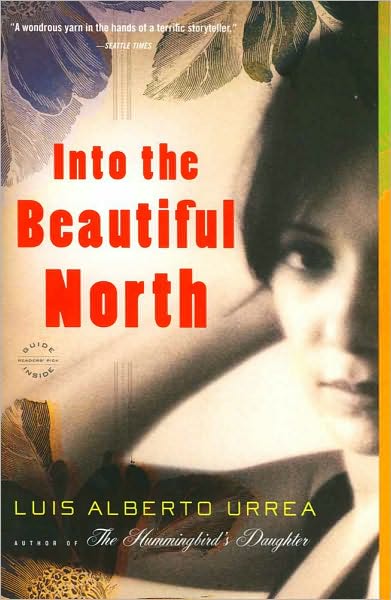 c2009 Fiction; Grades 9+; 342 p.
c2009 Fiction; Grades 9+; 342 p.Nominated for ALA’s 2010 Alex Award
Booklist's Adult Books for Young Adults 2009
Booklist Starred Review: If you are a judo-practicing, butt-kicking 19-year-old Mexican woman in a town with only one youngish man and he's gay you might decide to go to El Norte to recruit illegal immigrant men to revive your village. And Naveli, a twenty-first-century female Don Quixote with a three-person posse that includes her gay boss, does exactly that. This wonderfully funny, occasionally sad novel combines elements of the picaresque with the joie de vivre and startling coincidences of a road-trip movie. Urrea's knowledge of immigrant life, the rigors of poverty, and how being poor affects everyday existence provides the gritty details that make characters and places come alive. Sardonic humor, rugged details of the working-class poor, and the exotic, often bizarre characters all contribute to an outstanding reading treat. Fans of Urrea's nonfiction and his Kiriyama Prize winner, The Hummingbird's Daughter (2005), will probably not expect this lush, rollicking novel of quests, self-discovery, and romance. But once committed to the trip readers will have no trouble staying till the bittersweet and triumphant end.
Tuesday, March 22, 2011
The Life and Times of the Thunderbolt Kid by Bill Bryson
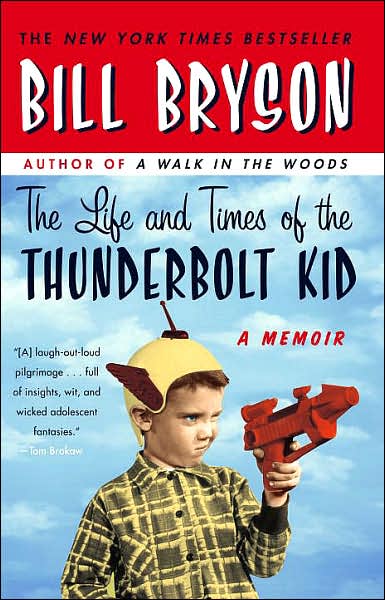 c2006 Non-Fiction; Grades 9+; 270 p.
c2006 Non-Fiction; Grades 9+; 270 p.2007 Book Sense Book of the Year
School Library Journal: The Thunderbolt Kid was "born" in the 1950s when six-year-old Bryson found a mysterious, scratchy green sweater with a satiny thunderbolt across the chest. The jersey bestowed magic powers on the wearer-X-ray vision and the power to zap teachers and babysitters and deflect unwanted kisses from old people. These are the memoirs of that Kid, whose earthly parents were not really half bad-a loving mother who didn't cook and was pathologically forgetful, but shared her love of movies with her youngest child, and a dad who was the "greatest baseball writer that ever lived" and took his son to dugouts and into clubhouses where he met such famous players as Stan Musial and Willie Mays. Simpler times are conveyed with exaggerated humor; the author recalls the middle of the last century in the middle of the country (Des Moines, IA), when cigarettes were good for you, waxy candies were considered delicious, and kids were taught to read with Dick and Jane. Students of the decade's popular culture will marvel at the insular innocence described, even as the world moved toward nuclear weapons and civil unrest. Bryson describes country fairs and fantastic ploys to maneuver into the tent to see the lady stripper, playing hookey, paper routes, church suppers, and more. His reminiscences will entertain a wide audience.
Little Brother by Cory Doctorow
 c2008 Fiction; Grades 9+; 382 p.
c2008 Fiction; Grades 9+; 382 p. Booklist Starred: Seventeen-year-old techno-geek w1n5t0n (aka Marcus) bypasses the school’s gait-recognition system by placing pebbles in his shoes, chats secretly with friends on his IMParanoid messaging program, and routinely evades school security with his laptop, cell, WifFnder, and ingenuity. While skipping school, Markus is caught near the site of a terrorist attack on San Francisco and held by the Department of Homeland Security for six days of intensive interrogation. After his release, he vows to use his skills to fight back against an increasingly frightening system of surveillance. Set in the near future, Doctorow’s novel blurs the lines between current and potential technologies, and readers will delight in the details of how Markus attempts to stage a techno-revolution. Obvious parallels to Orwellian warnings and post-9/11 policies, such as the Patriot Act, will provide opportunity for classroom discussion and raise questions about our enthusiasm for technology, who monitors our school library collections, and how we contribute to our own lack of privacy. An extensive Web and print bibliography will build knowledge and make adults nervous. Buy multiple copies; this book will be h4wt (that’s hot, for the nonhackers).
A Long Walk to Water by Linda Sue Park
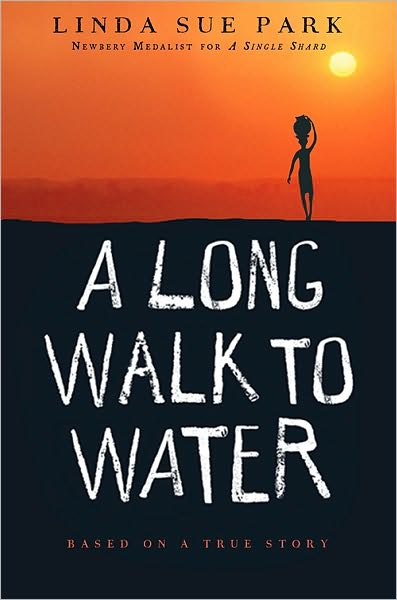 c2010 Fiction; Grades 6-9; 121 p.
c2010 Fiction; Grades 6-9; 121 p. Booklist Starred: After 11-year-old Salva’s school in Sudan is attacked by brutal rebel soldiers in 1985, he describes several terrifying years on the run in visceral detail: “The rain, the mad current, the bullets, the crocodiles, the welter of arms and legs, the screams, the blood.” Finally, he makes it to refugee camps in Ethiopia and then Kenya, where he is one of 3,000 young men chosen to go to America. After he is adopted by a family in Rochester, New York, he is reunited with the Sudanese family that he left behind. There have been several books about the lost boys of Sudan for adults, teens, and even for elementary-school readers. But Newbery Award–winning Park’s spare, immediate account, based on a true story, adds a stirring contemporary dimension. In chapters that alternate with Salva’s story, Nya, a young Sudanese girl in 2008, talks about daily life, in which she walks eight hours to fetch water for her family. Then, a miracle happens: Salva returns home to help his people and builds a well, making fresh water available for the community and freeing Nya to go to school. The switching viewpoints may initially disorient some, but young readers will be stunned by the triumphant climax of the former refugee who makes a difference with the necessities that we all take for granted. Teachers may want to point out the allusion to Nelson Mandela’s A Long Walk to Freedom (1995) echoed in this moving book’s title.
Marcelo in the Real World by Francisco X Stork
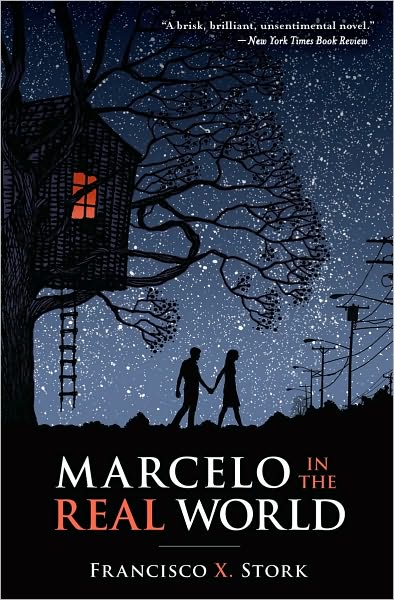 c2009 Fiction; Grades 9+; 312 p.
c2009 Fiction; Grades 9+; 312 p.Publisher’s Weekly Best Children’s Book 2009
Booklist Starred: Seventeen-year-old Marcelo is on the very high-functioning end of the autism spectrum. He prefers an ordered existence, which includes taking care of the ponies at Paterson, his special school; reading religious books; and listening to the music in his head. Then his father, a high-powered attorney, insists that Marcelo spend the summer working in his law firm. If he does his best, Marcelo will be given the choice of returning to Paterson or being mainstreamed. After finding a photo of a disfigured girl injured by the negligence of his father’s biggest client, Marcelo must decide whether to follow his conscience and try to right the wrong, even as he realizes that decision will bring irrevocable changes to his life and to his relationship with his father. That story alone would be thought-provoking, but Stork offers much, much more. Readers are invited inside Marcelo’s head, where thoughts are so differently processed, one can almost feel them stretch and twist as the summer progresses and Marcelo changes. Much of the impetus for change comes from his relationship with his mailroom boss, Jasmine. In a chapter near the end, Jasmine takes Marcelo to the family farm in Vermont, where he meets her raunchy father. It’s a scene many writers wouldn’t have bothered with, but the layers it adds mark Stork as a true storyteller. Shot with spirtualism, laced with love, and fraught with conundrums, this book, like Marcelo himself, surprises.
The Monstrumologist by Rick Yancey
 c2009 Fiction; Grades 9+; 434 p.
c2009 Fiction; Grades 9+; 434 p. Booklist Starred: With a roaring sense of adventure and enough viscera to gag the hardiest of gore hounds, Yancey’s series starter might just be the best horror novel of the year. Will Henry is the 12-year-old apprentice to Pellinore Warthrop, a brilliant and self-absorbed monstrumologist—a scientist who studies (and when necessary, kills) monsters in late-1800s New England. The newest threat is the Anthropophagi, a pack of headless, shark-toothed bipeds, one of whom’s corpse is delivered to Warthrop’s lab courtesy of a grave robber. As the action moves from the dissecting table to the cemetery to an asylum to underground catacombs, Yancey keeps the shocks frequent and shrouded in a splattery miasma of blood, bone, pus, and maggots. The industrial-era setting is populated with leering, Dickensian characters, most notably the loathsome monster hunter hired by Warthrop to enact the highly effective “Maori Protocol” method of slaughter. Yancey’s prose is stentorian and wordy, but it weaves a world that possesses a Lovecraftian logic and hints at its own deeply satisfying mythos. Most effective of all, however, is the weirdly tender relationship between the quiet, respectful boy and his strict, Darwinesque father figure. “Snap to!” is Warthrop’s continued demand of Will, but readers will need no such needling.
No Choirboy: Murder, Violence and Teenagers on Death Row by Susan Kuklin
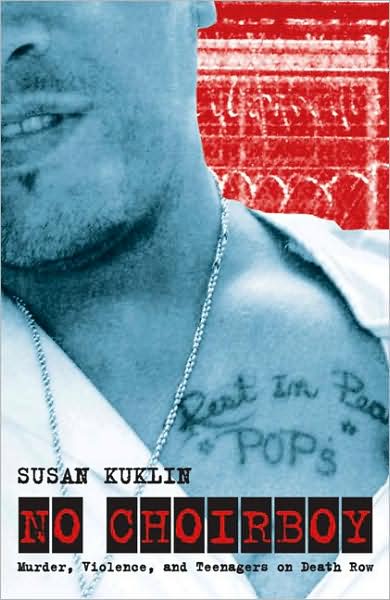 c2008
c2008Non-fiction; Grades 9+; 212 p.
School Library Journal Starred: Kuklin tells five stories here; four are about young men who committed murder before they reached the age of 18, and one is the story of a victim's family. Each narrative presents a picture of a troubled youth who did something he later regretted, but something that could not be undone. Within these deftly painted portraits, readers also see individuals who have grown beyond the adolescents who committed the crimes. They see compassion, remorse, and lives wasted within the penal system. Some of the stories tell of poverty and life on the streets, but others are stories of young men with strong, loving families. One even asks readers not to blame his family for his act of violence. Most of the book is written in the words of the men Kuklin interviewed. Their views are compelling; they are our neighbors, our nephews, our friends' children, familiar in many ways, but unknowable in others. Kuklin depicts the penal system as biased against men of color, and any set of statistics about incarceration and death-row conviction rates will back her up. She also emphasizes that being poor is damning once a crime is committed. She finally introduces Bryan Stevenson, a lawyer who has worked on the cases of two of the interviewees, who talks about his efforts to help those who are on death row. This powerful book should be explored and discussed in high schools all across our country.
One Hundred Years of Solitude by Gabriel Garcia Marquez
 c1995 Fiction; Grades 9+, 416 p.
c1995 Fiction; Grades 9+, 416 p. From the publisher: Probably García Márquez finest and most famous work. One Hundred Years of Solitude tells the story of the rise and fall, birth and death of a mythical town of Macondo through the history of the Buendía family. Inventive, amusing, magnetic, sad, alive with unforgettable men and women, and with a truth and understanding that strike the soul. One Hundred Years of Solitude is a masterpiece of the art of fiction, and is considered one of the greatest works of fiction of the Twentieth-Century.
One Whole and Perfect Day by Judith Clarke

Horn Book Starred: Like an extended treasure hunt, Clarke's novel traces eight characters through chance meetings, family rifts, and decisive moments to a final, festive celebration of unity. The family's small decisions, actions, and experiences converge in a miracle of identities revealed, kindness rewarded, and apologies accepted. Clarke's sharp, poetic prose evokes each character's inner life with rich and often amusing vibrancy.
Over and Under by Todd Tucker
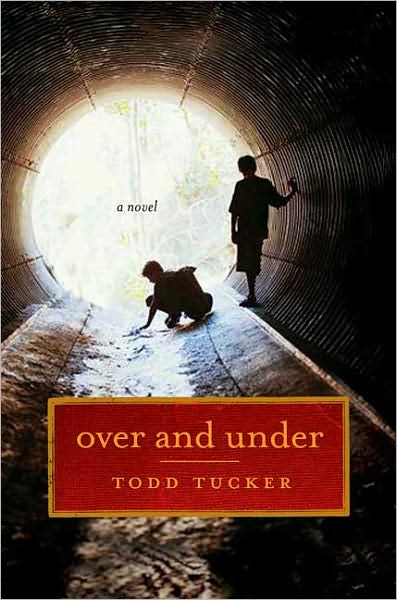 c2008 Fiction; Grades 9+; 275 p. 2009 ALA Alex Award
c2008 Fiction; Grades 9+; 275 p. 2009 ALA Alex AwardBooklist Starred: Thomas Jefferson and Andrew Jackson are best friends—no, not the dead presidents! This Tom and Andy are 14-year-old boys whose last names are Kruer and Gray, respectively. Living in the hills of Southern Indiana, these boys have been chums since infancy. Why, they’re tighter’n grandma’s girdle, but now, in the summer of 1979, their friendship is about to be tested. The Borden Casket Company, where their fathers both work, is going on strike, and Andy’s dad is management, while Tom’s is labor. Worse, Tom’s cousin gets involved in an act of vandalism that goes fatally wrong. And what’s the big secret that Andy’s Mom and the handsome local sheriff share? Tucker’s first novel is a classic coming-of-age story filled with the kind of nostalgic adolescent adventure that is the genre’s sometimes overly familiar hallmark. But the setting is gracefully realized, the real-world intrusions of the strike are nicely integrated into the plot, and both boys are as likable as Labrador pups. Who could ask for anything more?
Monday, March 21, 2011
Over a Thousand Hills I Walk with You by Hanna Jansen
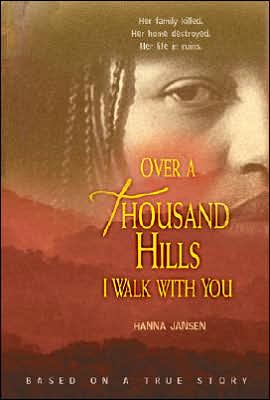 c2006 Fiction; Grades 7+; 342 p.
c2006 Fiction; Grades 7+; 342 p. Booklist Starred: Eight-year-old Jeanne was the only one of her family to survive the 1994 Rwanda genocide. Then a German family adopted her, and her adoptive mother now tells Jeanne's story in a compelling fictionalized biography that stays true to the traumatized child's bewildered viewpoint. Jeanne is witness to unspeakable horror, but the tragedy isn't exploited in her narrative. Nor is Jeanne sentimental about the world she loses: she feels jealous of her sister and distant from her father, and she takes her comfortable Tutsi Catholic home in Kibungo for granted. Readers unfamiliar with the history may be somewhat bewildered. Who are the Tutsis? Who are the Hutus? Why were almost a million people massacred? But that confusion is part of the story. An appended time line fills in some of the facts, but of course, there's no explanation. Woven into the child's story are brief, contemporary commentaries, set in italics, by the Jeanne's German mother, who speaks to her child about loss, fury, survivor guilt, and healing. Occasionally, the narrative is too detailed, especially about daily life before the massacre, but Crawford's translation from the German is always clear and eloquent. An elemental account of perpetrators, victims, and bystanders ("And the world looked on. Or looked away"), this book is an important addition to the Holocaust curriculum.
Pride & Prejudice by Jane Austen
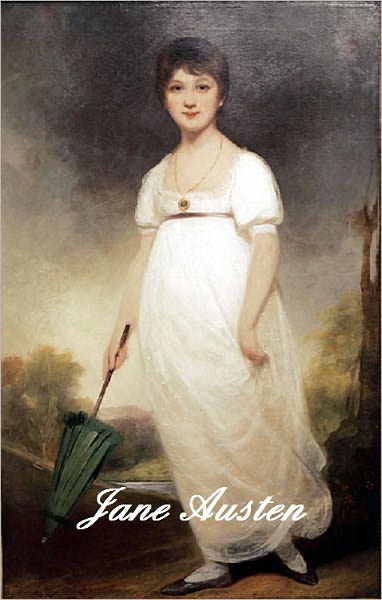 Fiction; Grades 8+; 281 p.
Fiction; Grades 8+; 281 p.From the publisher: For over 150 years, Pride And Prejudice has remained one of the most popular novels in the English language. Jane Austen herself called this brilliant work her "own darling child." Pride And Prejudice, the story of Mrs. Bennet's attempts to marry off her five daughters is one of the best-loved and most enduring classics in English literature. Excitement fizzes through the Bennet household at Longbourn in Hertfordshire when young, eligible Mr. Charles Bingley rents the fine house nearby. He may have sisters, but he also has male friends, and one of these -- the haughty, and even wealthier, Mr. Fitzwilliam Darcy -- irks the vivacious Elizabeth Bennet, the second of the Bennet girls. She annoys him. Which is how we know they must one day marry. The romantic clash between the opinionated Elizabeth and Darcy is a splendid rendition of civilized sparring. As the characters dance a delicate quadrille of flirtation and intrigue, Jane Austen's radiantly caustic wit and keen observation sparkle.
Ship Breaker by Paolo Bacigalupi
 c2010 Fiction; Grades 8-12, 326 p.
c2010 Fiction; Grades 8-12, 326 p. Prinz Book Award – 2011
Booklist Starred: This YA debut by Bacigalupi, a rising star in adult science fiction, presents a dystopian future like so many YA sf novels. What is uncommon, though, is that although Bacigalupi’s future earth is brilliantly imagined and its genesis anchored in contemporary issues, it is secondary to the memorable characters. In a world in which society has stratified, fossil fuels have been consumed, and the seas have risen and drowned coastal cities, Nailer, 17, scavenges beached tankers for scrap metals on the Gulf Coast. Every day, he tries to “make quota” and avoid his violent, drug-addicted father. After he discovers a modern clipper ship washed up on the beach, Nailer thinks his fortune is made, but then he discovers a survivor trapped in the wreckage—the “swank” daughter of a shipping-company owner. Should he slit the girl’s throat and sell her for parts or take a chance and help her? Clearly respecting his audience, Bacigalupi skillfully integrates his world building into the compelling narrative, threading the backstory into the pulsing action. The characters are layered and complex, and their almost unthinkable actions and choices seem totally credible. Vivid, brutal, and thematically rich, this captivating title is sure to win teen fans for the award-winning Bacigalupi.
Stolen by Lucy Christopher
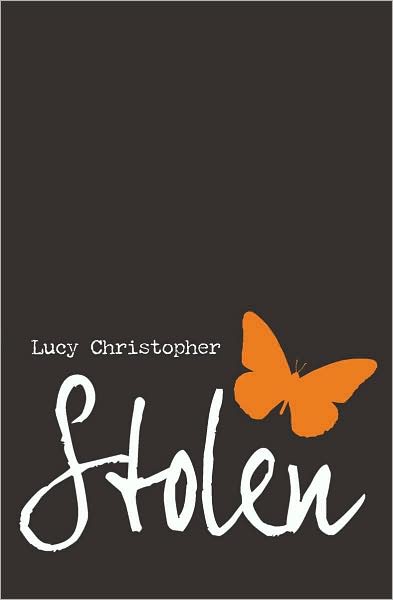 2010 Fiction; Grades 9-12, 299 p.
2010 Fiction; Grades 9-12, 299 p. Publisher’s Weekly Starred: Christopher's debut is an emotionally raw thriller that follows the abduction of 16-year-old Gemma by Ty, a gorgeous, 20-something Australian who is in love with her and hopes to win her love in return. The fast-paced novel is written in the past tense as a sort of diary from Gemma to Ty, suggesting that she has escaped, though this makes the story no less suspenseful. Ty drugs Gemma in a Bangkok airport and transports her to the home he has built in the isolated Australian outback, believing he's rescuing her from shallow parents and a city life in London she never really fit into. Clever and determined, Gemma gathers her strength and plots numerous escapes to no avail. In the process, she encounters the wildness of her desert surroundings and carefully digs for Ty's weaknesses, patching together his complex history, including the extent of his six-year obsession with her. Gemma's fluctuating emotions are entirely believable-she's repulsed by Ty, but can't help recognizing the ways in which he's opened her eyes. It's a haunting account of captivity and the power of relationships.
Tamar by Mal Peet
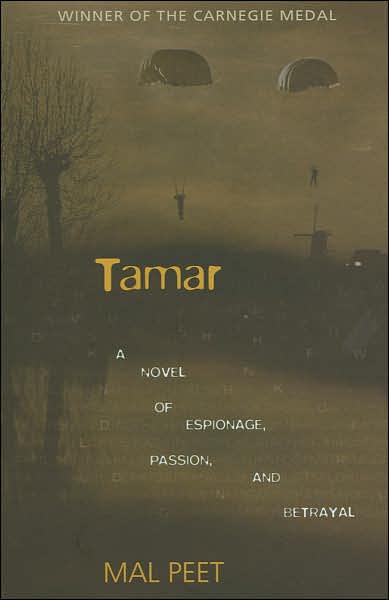 c2007 Fiction; Grades 9+; 424 p.
c2007 Fiction; Grades 9+; 424 p. A Thousand Splendid Suns by Khaled Hosseini
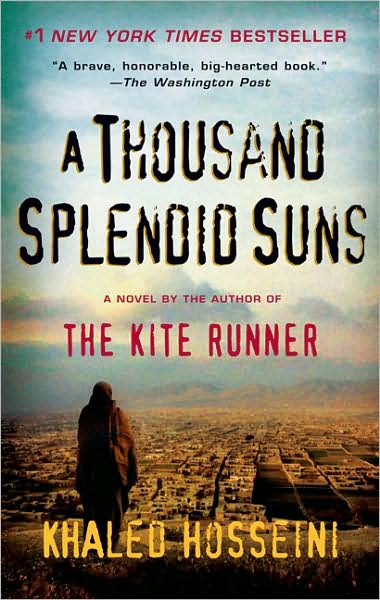 c2007 Fiction; Grades 8+; 372 p.
c2007 Fiction; Grades 8+; 372 p. ALA 2008 Best Books for Young Adults
Booklist Starred: Hosseini's follow-up to his best-selling debut, The Kite Runner (2003) views the plight of Afghanistan during the last half-century through the eyes of two women. Mariam is the illegitimate daughter of a maid and a businessman, who is given away in marriage at 15 to Rasheed, a man three times her age; their union is not a loving one. Laila is born to educated, liberal parents in Kabul the night the Communists take over Afghanistan. Adored by her father but neglected in favor of her older brothers by her mother, Laila finds her true love early on in Tariq, a thoughtful, chivalrous boy who lost a leg in an explosion. But when tensions between the Communists and the mujahideen make the city unsafe, Tariq and his family flee to Pakistan. A devastating tragedy brings Laila to the house of Rasheed and Mariam, where she is forced to make a horrific choice to secure her future. At the heart of the novel is the bond between Mariam and Laila, two very different women brought together by dire circumstances. Unimaginably tragic, Hosseini's magnificent second novel is a sad and beautiful testament to both Afghani suffering and strength. Readers who lost themselves in The Kite Runner will not want to miss this unforgettable follow-up.
A Time of Miracles by Anne-Laure Bondoux
 c2010 Fiction; Grades 7-12; 180 p. Batchelder Award Winner – 2011
c2010 Fiction; Grades 7-12; 180 p. Batchelder Award Winner – 2011 School Library Journal Starred: Blaise Fortune has gone by the name Koumail for most of his life with Gloria in the war-torn Republic of Georgia. Although he loves her like a mother, he enjoys hearing the story of how she rescued him from a train that had derailed and his French mother, a passenger, died, and he dreams of the day he will find his real family. When the Soviet Union collapses, Gloria and Koumail begin a long, perilous journey to France where she believes he can live the life he deserves, without the stress and strife of war. Readers follow them through refugee camps, alternating between times of more peaceful hardship and periods of danger and flight. When Gloria tells Koumail to hide in a truck, he makes it to France but she is left behind. As he grows from a child into an adolescent, Koumail begins to wonder more about his true identity, and the novel culminates nine years later with a heartbreaking realization. The story is written in beautiful, quiet prose and offers a touch of hope, along with tragedy. The characters and story are well formed, but young people unfamiliar with the circumstances of life behind the Iron Curtain and the collapse of the Soviet Union might be confused as much of the conflict and political situation isn't explained until near the end of the book. However, those who stay with it will be rewarded with an exceptional story.
Water for Elephants by Sara Gruen
 c2006 Fiction; Grades 9+; 335 p. ALA Outstanding Books for the College Bound – 2009
c2006 Fiction; Grades 9+; 335 p. ALA Outstanding Books for the College Bound – 2009Wicked Girls: A Novel of the Salem Witch Trials by Stephanie Hemphill
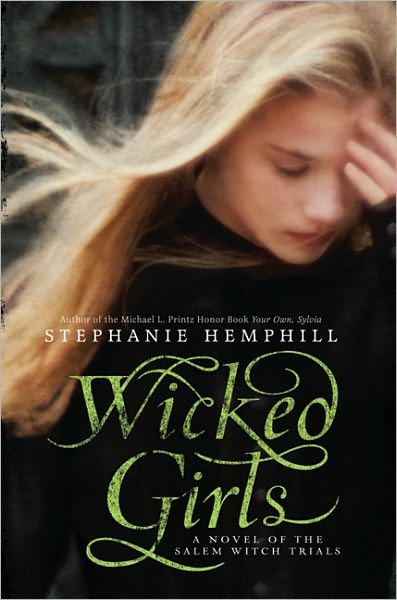 Fiction; Grades 8-12; 408 p.
Fiction; Grades 8-12; 408 p. School Library Journal Best Books Of The Year 2010
Booklist Starred: Hemphill follows her Printz Honor Book Your Own, Sylvia (2007) with another bold verse novel based on historical figures. Here, her voices belong to the “afflicted” girls of Salem, whose accusations of witchcraft led to the hangings of 19 townspeople in 1692. Once again, Hemphill’s raw, intimate poetry probes behind the abstract facts and creates characters that pulse with complex emotion. According to an appended author’s note, unresolved theories about the causes of the girls’ behavior range from bread-mold-induced hallucinations to bird flu. In Hemphill’s story, the girls fake their afflictions, and the book’s great strength lies in its masterful unveiling of the girls’ wholly believable motivations: romantic jealousy; boredom; a yearning for friendship, affection, and attention; and most of all, empowerment in a highly constricting and stratified society that left few opportunities for women. Layering the girls’ voices in interspersed, lyrical poems that slowly build the psychological drama, Hemphill requires patience from her readers. What emerge are richly developed portraits of Puritanical mean girls, and teens will easily recognize the contemporary parallels in the authentic clique dynamics. An excellent supplementary choice for curricular studies of Arthur Miller’s The Crucible, this will also find readers outside the classroom, who will savor the accessible, unsettling, piercing lines that connect past and present with timeless conflicts and truths.
Wuthering Heights by Emily Bronte
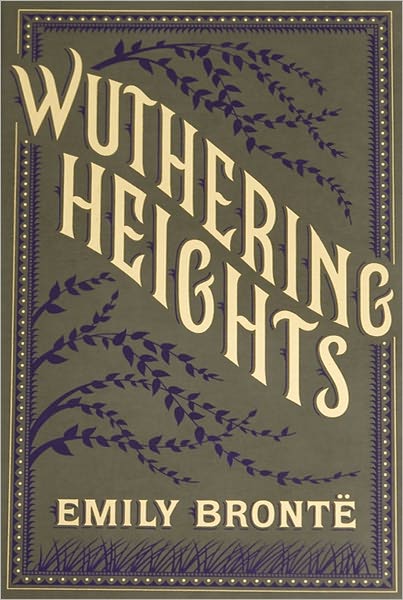 Fiction; Grades 9+; 412 p. 770L
Fiction; Grades 9+; 412 p. 770LFrom the Publisher: "My greatest thought in living is Heathcliff. If all else perished, and he remained, I should still continue to be... Nelly, I am Heathcliff! He's always, always in my mind: not as a pleasure... but as my own being." Wuthering Heights is the only novel of Emily Bronte, who died a year after its publication, at the age of thirty. A brooding Yorkshire tale of a love that is stronger than death, it is also a fierce vision of metaphysical passion, in which heaven and hell, nature and society, are powerfully juxtaposed. Unique, mystical, with a timeless appeal, it has become a classic of English literature.
Zeitoun by Dave Eggers
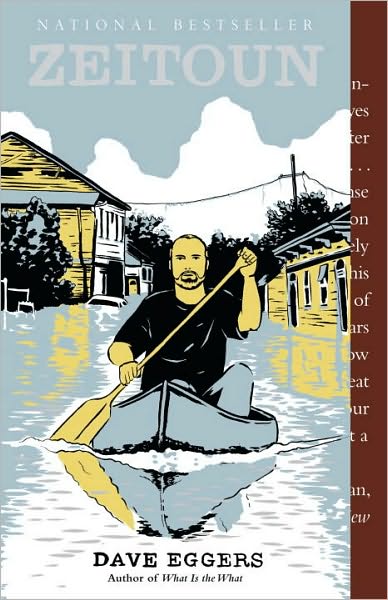 c2009 Non-fiction; Grades 9+; 351 p.
c2009 Non-fiction; Grades 9+; 351 p.ALA 2010 Alex Award nominations
Booklist starred: Eggers burst onto the scene in 2000 with his hugely successful memoir, A Heartbreaking Work of Staggering Genius. Unlike many memoirists, he has resisted the temptation to parcel out the unpublished parts of his life into yet more memoirs. Instead, in his most compelling works since his debut, he has told the stories of others. What Is the What (2006) explored, in novel form, the ordeals of Valentino Achak Deng, a Sudanese “lost boy,” and now Eggers chronicles, as nonfiction, the tribulations of Abdulrahman Zeitoun, a Syrian American painting contractor who decides to ride out Hurricane Katrina in New Orleans. Although his wife, Kathy, leaves town with their four children, Abdulrahman (known as Zeitoun because few locals can pronounce his first name) stays behind, hoping to protect their home, their job sites, and their rental properties. After the storm, he paddles the flooded streets in a canoe, rescuing stranded people, feeding trapped dogs, and marveling at the sometimes surreal beauty of the devastation. Was it God’s plan that he help others? he wonders. Then people in uniforms take him at gunpoint and incarcerate him. There are no charges, only the guards’ insistence that he is “al Qaeda” and “Taliban.” Zeitoun’s odyssey—23 days of grueling imprisonment, held incommunicado and deprived of all due process—is but one nightmare of many lived after Katrina. But it is exceptionally well told: here, as in What Is the What, Eggers employs a poetic, declarative style, shaping the narrative with subtlety and grace. More importantly, it is exceptionally well chosen. In the wake of disaster, we often cling to stories reassuring us that we respond to trials heroically. But Zeitoun reminds us that we are just as capable of responding to fear fearfully, forgetting the very things we claim to value most. Heartbreaking and haunting.
